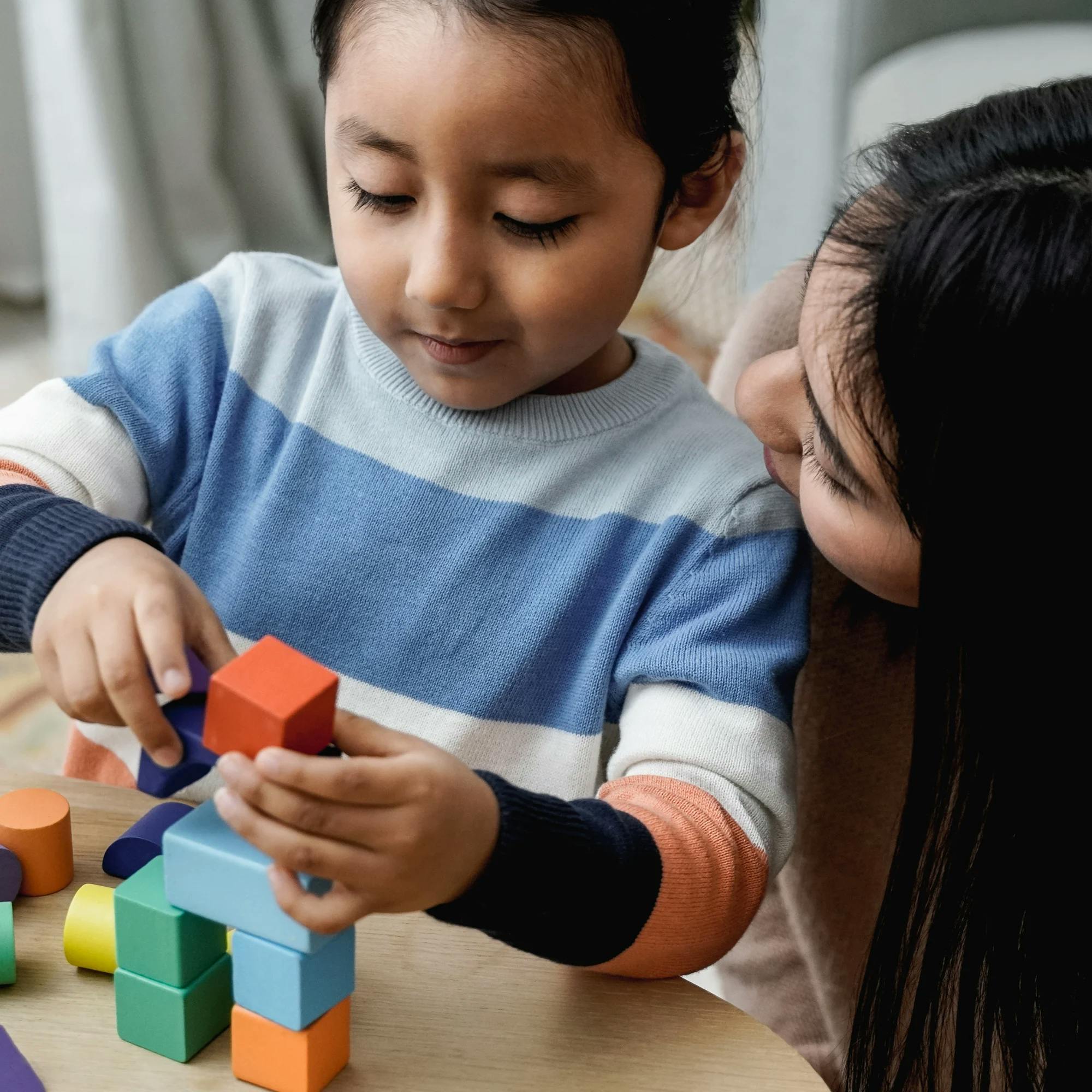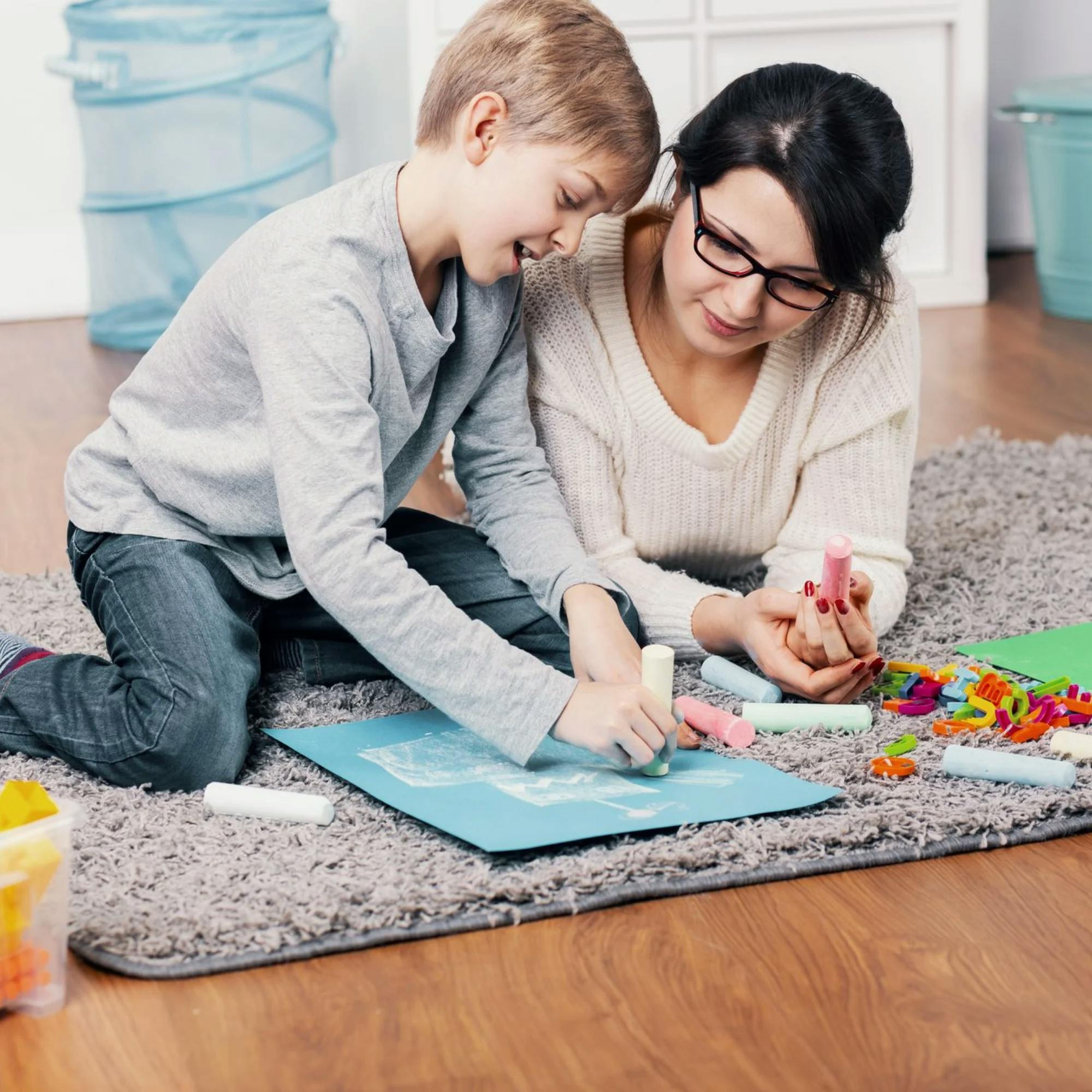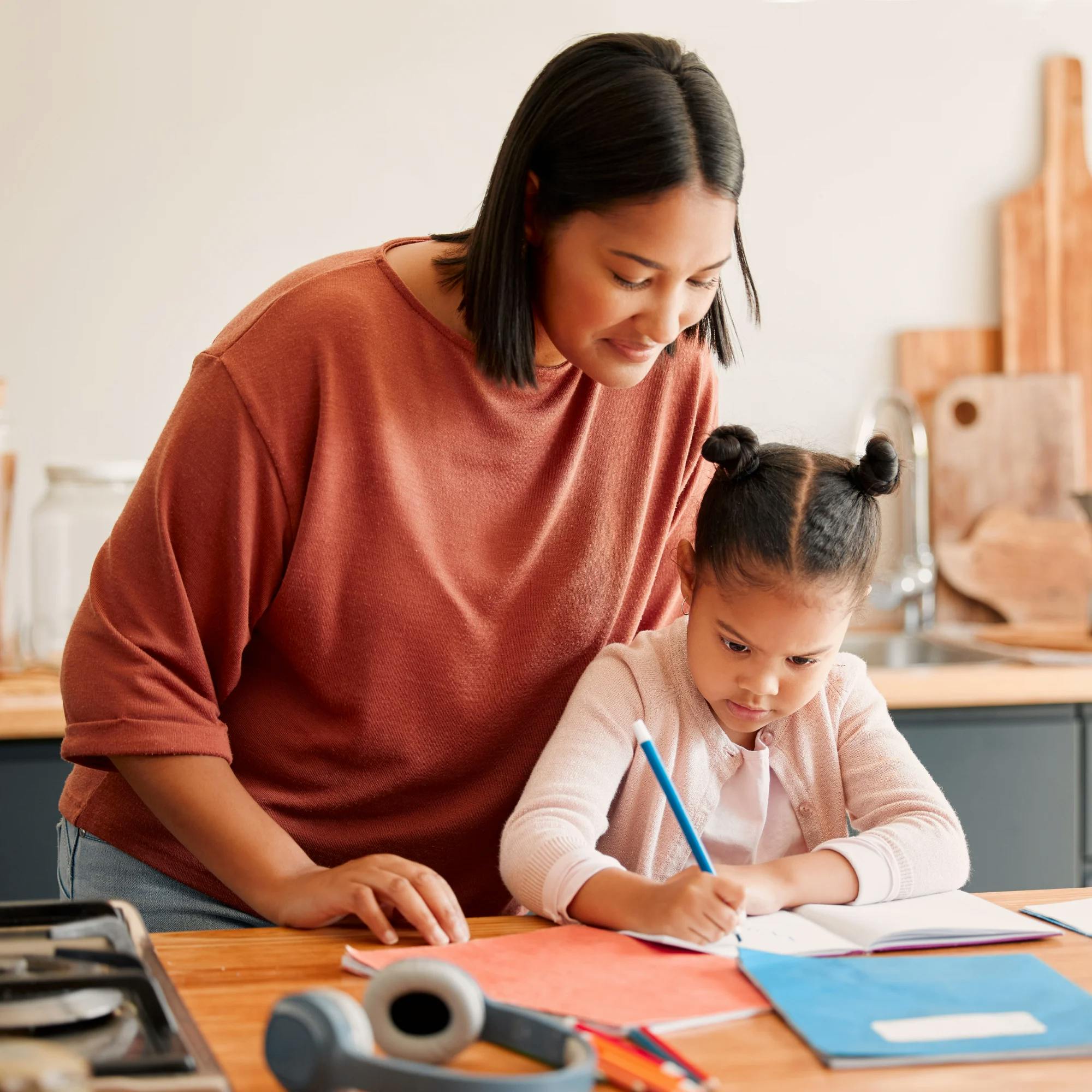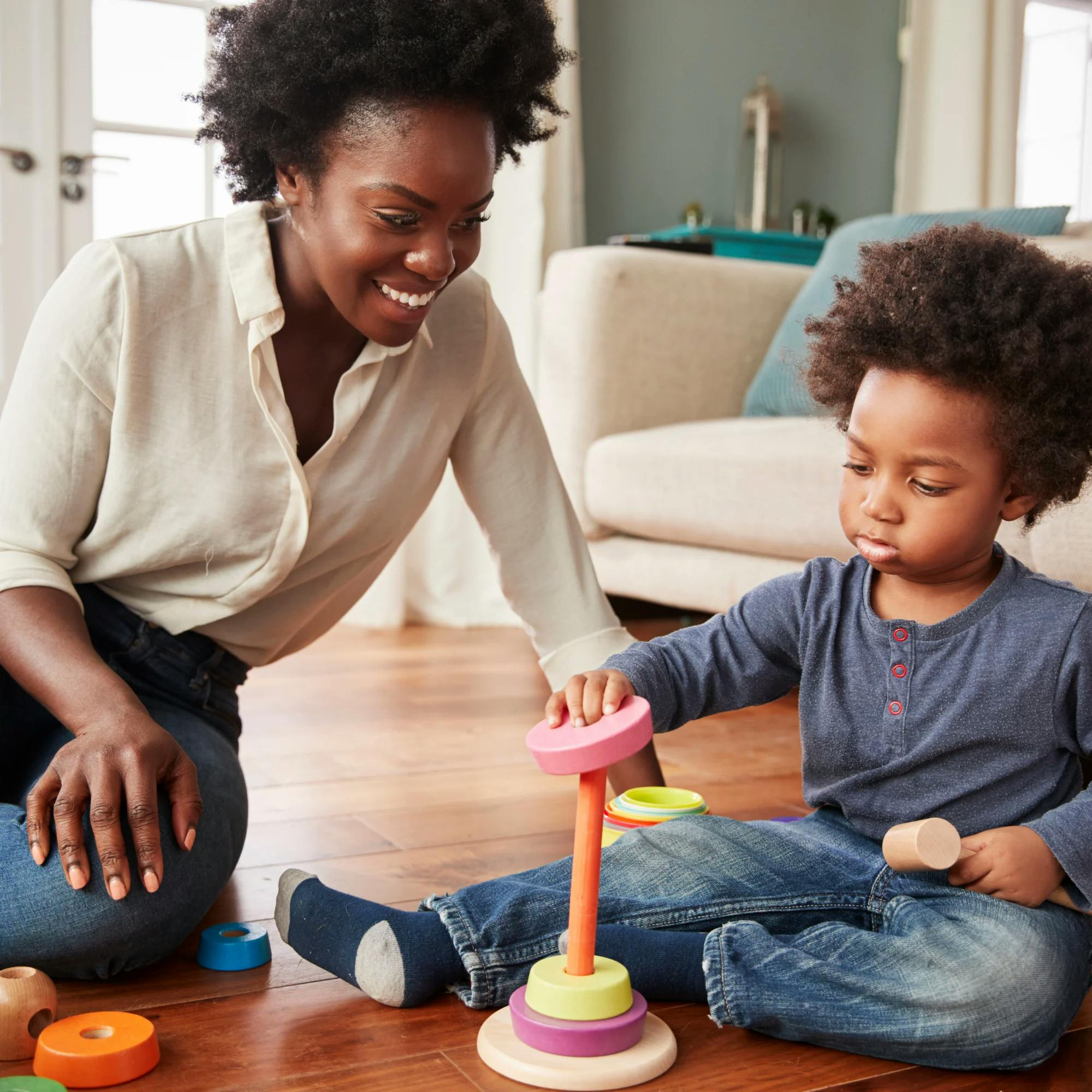
4 Important Language Learning Skills for Autism Spectrum Disorder
 Abby Barnes, M.S., CCC-SLP
Abby Barnes, M.S., CCC-SLP
Autistic children have their own unique needs when it comes to acquiring language. At times it can be challenging for parents and caregivers to know how to help their child grow their language abilities and what to address in day-to-day routines.
In this article, we discuss the top four skills you can target at home to help your child with autism on their communication journey!
Personalized care for your child
We support autistic children for who they are and help them build new skills. Get matched with a licensed speech therapist today.
 Get started
Get started1. Responding to their name
Responding to your name is one of the foundational skills in communication. When someone calls your name, it signals that they're trying to get your attention. Many autistic children have a hard time paying attention when their name is called.
While you can't always make a child respond to their name, you can give them lots of chances to practice! When beginning to speak to your child, or when giving them a direction to follow, make sure to state their name before the conversation. For example, you could say, "Charlie, please come here," or "Samantha, hi."
This will allow your child to get familiar with hearing their name called. Repetition provides more opportunities to hear their name on a daily basis, reinforcing the idea that it's expected that they turn and listen to the speaker. You never know when this skill will “click” for your little one. So practice often--you won’t forget the day this milestone happens!
Here's another tip: Provide a tactile cue to help your child, so long as they're not sensitive to touch. When calling your child’s name, you can tap their shoulder or touch their hand to help get their attention.


2. Turn-taking
The ability to take turns is a simple activity that has a huge impact on a child's language learning abilities. Simple activities like rolling cars back and forth with someone else, or stacking blocks together, is considered a turn-taking routine. They both require two people to participate and have a give-and-take exchange. This is much like communication. Play skills are actually essential to promote early language development, and turn taking is a great example!
To help your child learn to take turns, you can model simple play routines for them to observe. If you have another child or adult at the house, participate in a simple turn-taking routine with the other person and have your child watch. They may even join in on the fun themselves!
Additionally, make sure to mimic play activities near your child often. It's likely that they may participate in some parallel play first--this means playing independently near you, but not with you. While you can try to engage your child, you can also try waiting to see if your child will participate with you on their own terms. You can do this by picking a toy or a task that you know your child really enjoys and see if it motivates them to join!


3. Initiating an interaction
Initiating, or starting, interactions is key to helping children improve their language development. Closely monitor anything that your child typically does to get your attention. Do they pull you toward something they want you to see? Do they vocalize when around something that excites them? Let's use this attention-grabbing technique to set up a scenario that they can initiate.
For example, let's say that your child really loves puzzles. Give your child one piece of the puzzle and then wait. What do they do? Do they try to get the piece from you? Do they communicate in any way? Or do they give up easily and find a new toy to play with?
The goal is to teach your child that they can initiate an interaction to get a response (or something they want).
The goal here is to teach your child that they can initiate an interaction to get a response (or something they want). Rewarding your child with their desired request after they start the interaction is a perfect way to reinforce this skill.
Using our puzzle example, let's say your child vocalized their request for more puzzle pieces. They've attempted to initiate communication, so we can reward them with more pieces! You can work on refining their form of communication as their skills progress.
4. Modes of communication: Gestures, sounds, words
Set up different situations with your child where you feel they're likely to communicate. This could be a highly motivating activity such as requesting a favorite snack, toy, or game.
Make note of how your child typically communicates. You will try to help your child communicate just one step above their current skill. Here's how you can do this.
Let's go back to our puzzle example and pretend your child is trying to request more pieces. If they typically cry and get upset, but don’t gesture or point to what they want, then help them use gestures and point to the puzzle pieces.
If your child can gesture pretty well, then you can help them vocalize and make sounds for the puzzle--maybe saying “p-p-p-p” to request a piece.
If your child is often vocalizing or maybe even babbling to request what they want, then you can model a one-word phrase to help them ask for the puzzle. These can be words such as “please,” “more,” “want,” or even “puzzle.”
As your child begins to use single words, you can help them use phrases to better express their needs. In this case it could be a phrase such as “I want puzzle” or “More puzzle.”
Using pictures to help your child communicate
One mode of communication that may not initially come to mind is using pictures for communication. For children who are having trouble expressing their needs with words, pictures can be a game changer. Pictures open up a whole new world of communication abilities.
You can take pictures or find pictures online of different things your child would likely need to request during the day. This may include food, drinks, toys, favorite activities, etc.
When they want to ask for an item, they can point to the picture or hand it to you. If you think your child would respond well to this strategy, try it out! Using the scenario above, if your child gestured to a picture of puzzle pieces, make sure to reward them by giving them the pieces!


Practice consistently, and stay patient
For autistic children, many of these skills may be challenging to learn and use throughout their daily life. That's why it's so important to give your child lots of chances for daily practice. The more you reinforce these skills at home, the more progress your child is likely to make.
There will be a day when you start seeing the pieces all come together. These are the moments that make all your hard work completely worth it!
In addition to practice, give your child lots of encouragement as you work together. No win is too small, so make sure to cheer, clap, and praise them for all their effort. This added motivation helps your child know that you're right beside them each step of the way.

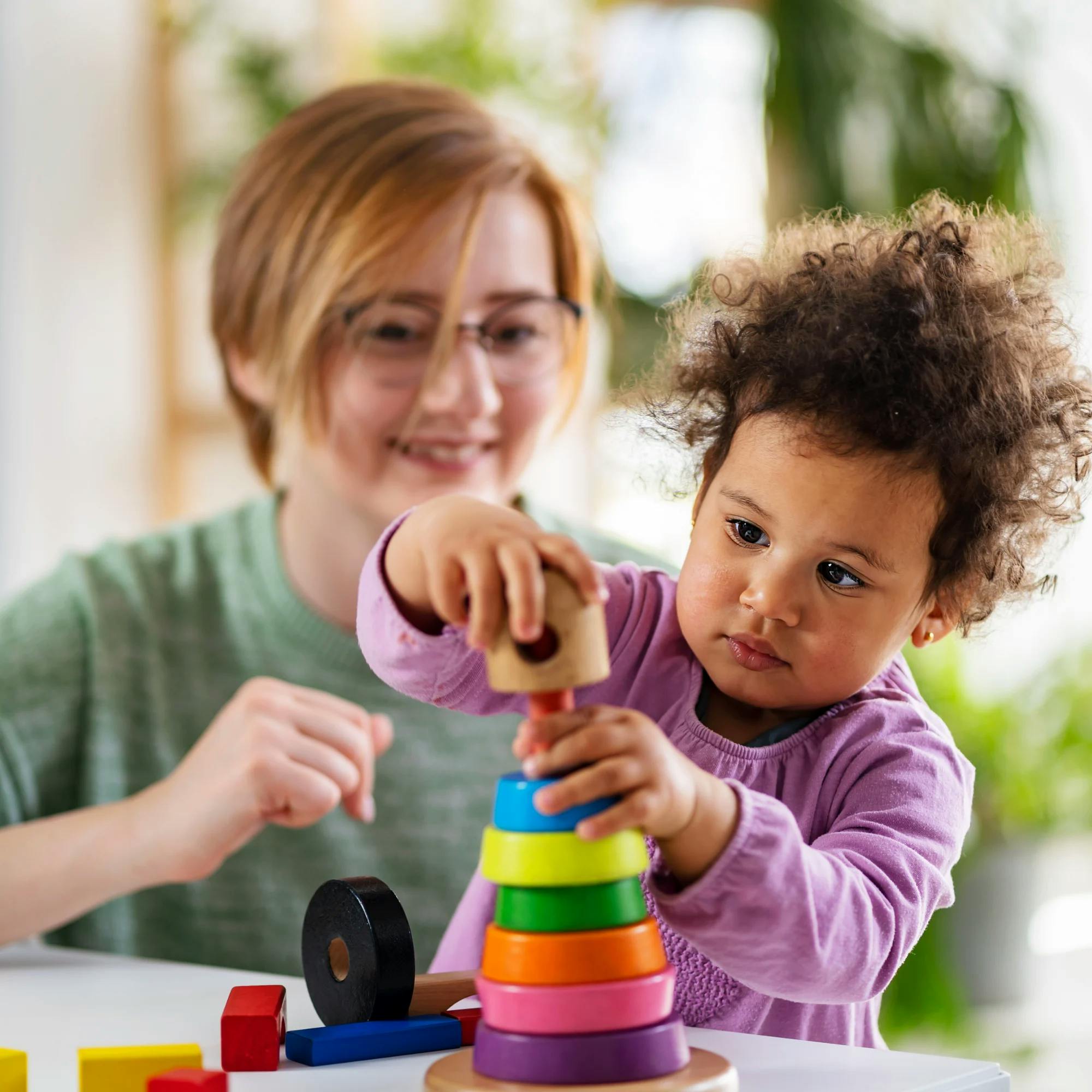
An important note: We believe that when speaking about any community as a whole, the best approach is to prioritize that community’s voices, needs, and preferences. Within the larger autism community, the current language preference is identity-first, which is why we use that language in our content. Expressable is committed to listening to and learning from the populations we serve. If and when their preferences change, we’ll adjust our approach accordingly.
How Expressable Can Help
Concerned your child isn't reaching age-expected milestones? Looking for communication support from a professional? Expressable is a national online speech therapy practice serving children and adults. We treat all major areas of communication and feeding, offer flexible hours including evenings and weekends, and accept most major health insurance plans. We’re proud to have earned more than 3,000 5-star reviews from our clients (4.9/5 average).
Our therapy model is centered on parent and caregiver involvement. Research proves that empowering caregivers to participate in their loved one’s therapy leads to better outcomes. That’s why we combine live, 1-on-1 speech therapy with personalized education and home practice activities for faster progress.
Communication is more than words. It’s how we share how we feel and show who we are. We’re here to help you or your child do just that.



